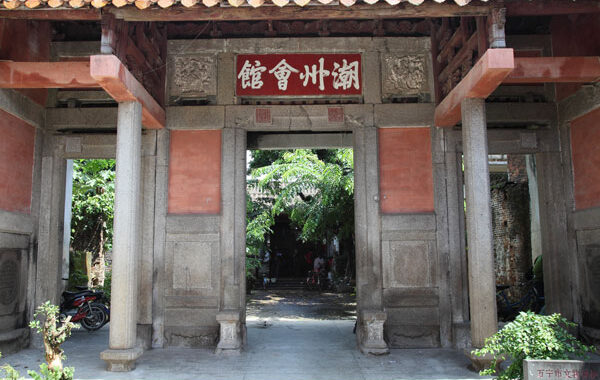Chinese Battle Dance: Puning Nanshan Yingge Wows London in Spectacular Fashion

On February 10th, the first day of the Chinese New Year, the Puning Nanshan Yingge Dance Troupe was invited by the London Chinatown Business Association to showcase their talent at the “Joyous Spring Festival” series of events in London, UK. The performance took place at the iconic Burlington Arcade, bringing the “Chinese Battle Dance” Yingge Dance beyond borders to convey the New Year blessings from Guangdong to overseas Chinese and foreign friends. A video of the performance reveals a crowded scene with people enthusiastically capturing the splendid moments on their smartphones, prompting trends such as “London Embraces Yingge Dance,” dominating various hot search lists. Netizens commented, “Not only popular domestically, but also internationally acclaimed.”
In attendance at the event were the Chinese Ambassador to the UK, Zheng Zeguang, and his wife, who enjoyed the live performance.

Explosive Debut: Stunning the Audience on First Overseas Performance
Recently, the historic Burlington Arcade, with over two centuries of cultural heritage, hosted a special Chinese New Year event where the Guangdong Puning Yingge Dance was showcased in London. Supported by the Chinese Embassy in the UK and invited by the London Chinatown Business Association, the performance was organized by the Guangdong Provincial Department of Culture and Tourism, with 16 dancers specially traveling to present. On the first day of the Chinese New Year, the Puning Nanshan Yingge Dance Troupe appeared at Burlington Arcade, and on the second day, they performed at the main stage of Trafalgar Square, marking the beginning of the “Four Seas Celebrate Spring” New Year celebrations.

The “Four Seas Celebrate Spring” New Year celebration is touted as the largest New Year celebration event outside Asia, attracting over 700,000 people. During the event, the Puning Yingge Dance from Guangdong Chaozhou presented a magnificent performance, dazzling audiences from various countries.
During the performance, dancers portrayed characters from “Water Margin,” donning facial makeup, warrior attire, and engaging in fast-paced combat routines. Moving from the south side to the north side of the arcade, performers wielded specially crafted dual short rods, accompanied by rhythmic drumbeats and horns. The choreography showcased unpredictable formations and diverse movements, forming unique rhythms with a grand and majestic atmosphere, captivating the local audience. King and Prime Minister of the UK sent congratulatory letters for the celebration, with King Charles praising it as the “most successful and unforgettable event.”
Origin: Early Use in Rituals and Entertainment
Yingge Dance integrates elements of drama, dance, and martial arts and has been practiced for centuries. It is a unique folk cultural symbol in the Chaozhou region of Guangdong, with a history of over 300 years. In 2006, it was listed as one of the first national-level intangible cultural heritage projects by the State Council. Yingge Dance embodies rich Chinese cultural heritage, with its dynamic and robust movements reflecting patriotism, emotional expressions, and other core elements through artistic forms such as dance and music.
Yingge Dance, also known as “Ying Ge,” “Yin Ge,” “Ying Ge,” and “Yang Ge” in the Chaozhou region, has its origins dating back to the mid-Ming Dynasty or even earlier, owing to the region’s unique geographical position and historical circumstances. Initially used for rituals, worship, and entertainment, it gained popularity in folk theatrical performances during the Yuan, Ming, and Qing Dynasties. It primarily thrives in Puning, Chaoyang, Chaonan, and Chao’an in the Chaozhou region, with each village having its own Yingge Dance team. These teams traditionally performed in village squares, embodying authentic Chinese street dance. During the early years of the People’s Republic of China, Yingge Dance teams grew significantly, with nearly every town and village in Puning and Chaoyang having their own teams, numbering over 150 at its peak. During the 2008 Beijing Olympics, the Nanshan Yingge Dance Team performed at Tiananmen Square.

Character Materials Inspired by Heroes of “Water Margin”
Yingge Dance typically narrates stories from the “Water Margin,” specifically the rescue of Lu Junyi from the prison in Chapter 64. Chen Laifa, the head coach of the Nanshan Yingge Dance Team performing in London, explained that Nanshan Yingge falls under the category of fast-paced Yingge, characterized by its agility, precision, and powerful strikes. The performance encompasses various episodes within a tight timeframe, depicting scenes such as reconnaissance, battle preparation, river crossing, assaulting the stronghold, rescuing Lu, heroes’ reunion, and triumphant return, all based on “Water Margin.”
Similarly, Hong Rongzeng, coach of the Fenggang Yingge Dance Team from Chaoyang District, Shantou City, mentioned that Fenggang Yingge emphasizes masculine movements, drawing from Southern Fist and Drunken Fist techniques.
Regardless of the region, all Yingge performers intricately depict the facial makeup of characters and portray their physical and temperamental characteristics resembling heroes of Liangshan, dressed in warrior attire.

Artistry: Essence of Yingge Dance Lies in “Playing Hammer Flowers”
The foundation of Yingge movements lies in “playing hammer flowers” and “hammering.” “Playing hammer flowers” involves swirling the hammers in circular motions using the wrist, while flicking them with the middle, ring, and pinky fingers to create flower-like patterns. Chen Sheng, a member of the Yingge team participating in the London performance, emphasized that turning the hammers into blossoming flowers epitomizes the essence of Yingge Dance. Additionally, there are various forms of “hammering,” including vertical, diagonal, double throws, chopping, darting, inserting, hugging, and backhand strikes, each requiring speed, versatility, and strength.
Hong Rongzeng explained that Fenggang Yingge Dance incorporates sequences of three hammer strikes in one move, such as “seven drums and eight hammers” or “eight drums and seven hammers,” following the rhythm of the drums to complete the dance sequence.
All these movements demand speed, variety, and impactful strikes.

Dance: Evolving from Military Formations
Yingge Dance, primarily a collective dance form of the Han people, features fixed basic formations and patterns during performances. Over generations, Yingge artists have developed unique formations and choreographic styles.
In addition to the diverse upper body movements, Yingge Dance requires agile leg movements and intricate footwork, including bow steps, horse steps, single-leg stances, cross steps, single-leg kneeling, and more. While preserving traditional techniques, Hong Rongzeng has innovated individual movements such as sweeping hammers, jumps, triple steps, and lotus sits, enhancing the dance’s visual appeal.
Basic group formations in Yingge Dance include “Two Dragons Emitting Beards,” “Golden Dragon Piercing Water,” “Ear of Grain Formation,” “Double Ear of Grain Formation,” “Snail Ring,” “Square Formation,” “Iron Chain Formation,” “Landing Plum Blossom Formation,” among others. These formations and movements are derived from ancient military training and siege tactics, vividly portraying the cleverness and bravery of the heroes of Liangshan, symbolizing their righteous cause.

Inheritance: Female Members Now Participating
Chen Laifa, head coach of the Nanshan Yingge Dance Team, revealed that the team has a history of over 300 years. However, around 1990, the Nanshan Yingge Dance Team gradually declined as young people from the village went to work elsewhere, leaving only 20 members unable to form a performance team.
However, with the development of the economy and society, this situation has greatly improved, with many young people now willing to learn and perform Yingge Dance. As an inheritor of intangible cultural heritage, Hong Rongzeng expressed that in his youth, he found Yingge Dance appealing and popular among locals, making it easier to find a spouse. “Over the past twenty years of being involved in Yingge Dance, I have truly fallen in love with it and hope to see more young people join us in inheriting our cultural traditions.”

For most members, Yingge Dance is a secondary pursuit, with their primary occupations ranging from construction workers to business owners or office workers. Performances often yield no income, and any subsidies received are minimal. Despite this, members remain committed to training and performing.
Chen Laifa mentioned that the Nanshan Yingge Dance Team has established a special base in a local primary school and formed the Nanshan Junior Yingge Dance Team. Every year, announcements are made via loudspeakers throughout the village to recruit new members, with over 380 people registering in the most recent recruitment drive.

According to local media reports, on January 15th of this year, the Puning Nanshan Yingge Inheritance Base was officially established, welcoming its first female member to the Nanshan Yingge Dance Team. Chen Laifa stated, “This year marks another milestone as we break the tradition of only passing down to male members, welcoming more youth and enthusiasts of Yingge Dance to join us in learning and preserving our cultural heritage, ensuring that Yingge Dance continues to thrive.”
Popularity: Retaining the Battle Spirit of “Chinese Battle Dance”
The recent performance in London is not the first time Chaozhou Yingge Dance has ventured abroad. Last June, the Fumei Youth Yingge Dance Team from Puning visited Prachin Buri and Udon Thani in Thailand to exchange experiences with local Yingge dancers and perform together.
Li Hongxin, a member of the Guangdong Folk Artists Association, believes that the attention garnered by Yingge Dance, both online and offline, is inseparable from the Chinese government’s recent emphasis on the inheritance and development of excellent traditional Chinese culture, promoting cultural confidence and strength.

“Yingge Dance is an interactive expression between Chaozhou people and the land they love and grow up in, a culture that can be danced and shared, a form of art with high openness and strong inclusivity,” said Yang Hong, director of the Intangible Heritage Communication Research Center at the Communication University of China. Through Yingge Dance and other representative forms of intangible cultural heritage, contemporary practice is expanding ancient Chinese traditional culture into a “Chinese-style pop culture.”
Jiang Bing, president of the Lingnan Cultural Research Association in Guangzhou and professor at Guangdong University of Finance and Economics, explained that Yingge Dance has its roots in the Central Plains but flourishes in Lingnan. As outstanding traditional Chinese culture sets sail and becomes a global trend, Jiang believes that the most authentic cultural presentation to the world should preserve Yingge Dance’s original flavor and its combat spirit as the “Chinese Battle Dance,” avoiding shallow performance interpretations.


 Festive Rush Ignites Production Frenzy in Teochew: Toy Manufacturers Gear Up for New Year Orders
Festive Rush Ignites Production Frenzy in Teochew: Toy Manufacturers Gear Up for New Year Orders  Exploring the Rich Legacy of Teochew Guildhalls: Bridges of Culture and Commerce
Exploring the Rich Legacy of Teochew Guildhalls: Bridges of Culture and Commerce  Renowned Teochew Economist Named Fellow of International Economic Association
Renowned Teochew Economist Named Fellow of International Economic Association  UK Telecom Merger Under Fire: Vodafone-CK Hutchison Deal Under National Security Review
UK Telecom Merger Under Fire: Vodafone-CK Hutchison Deal Under National Security Review  Why local US newspapers are sounding the alarm
Why local US newspapers are sounding the alarm  LabCorp hit with federal suit over robocalls
LabCorp hit with federal suit over robocalls  Chinese Battle Dance: Puning Nanshan Yingge Wows London in Spectacular Fashion
Chinese Battle Dance: Puning Nanshan Yingge Wows London in Spectacular Fashion